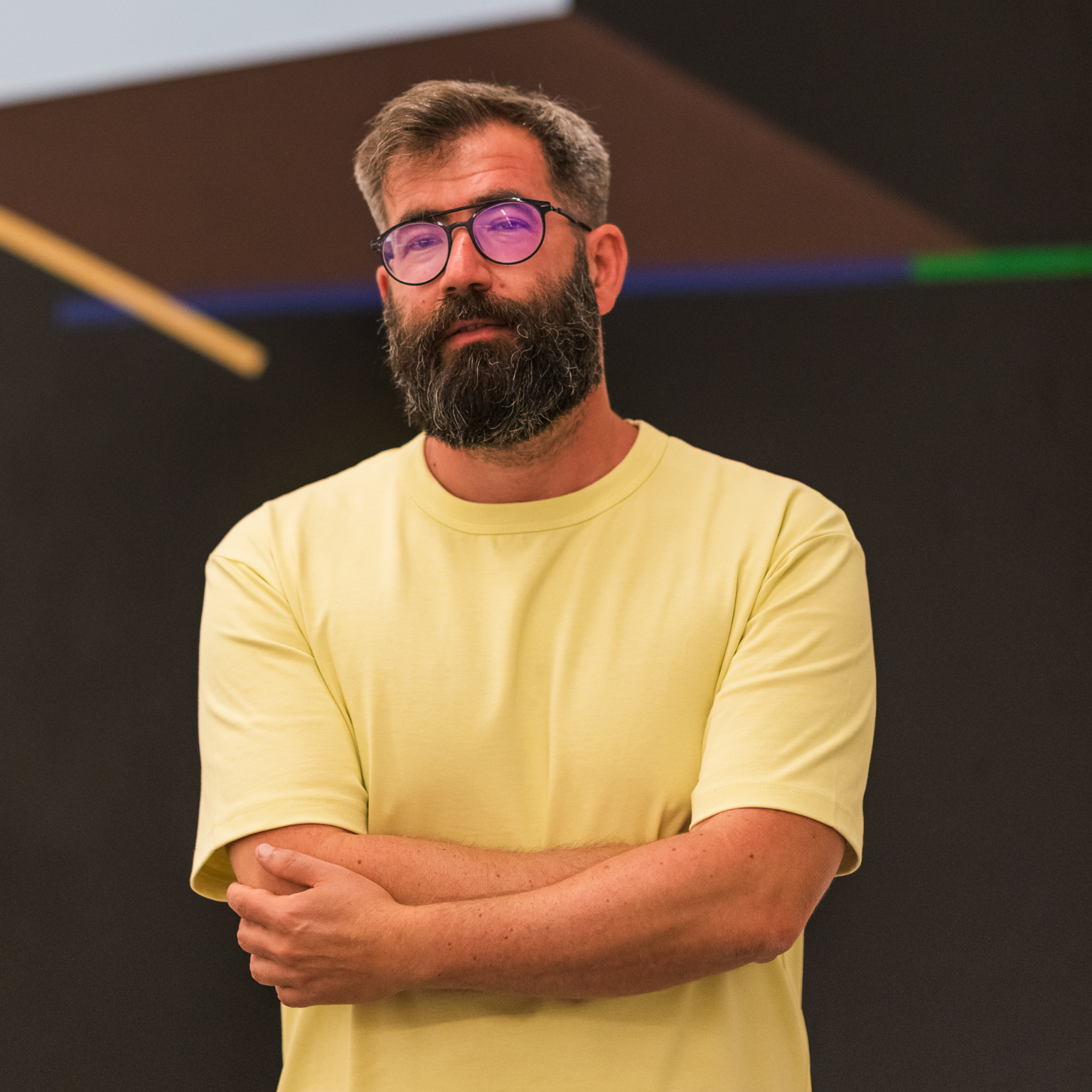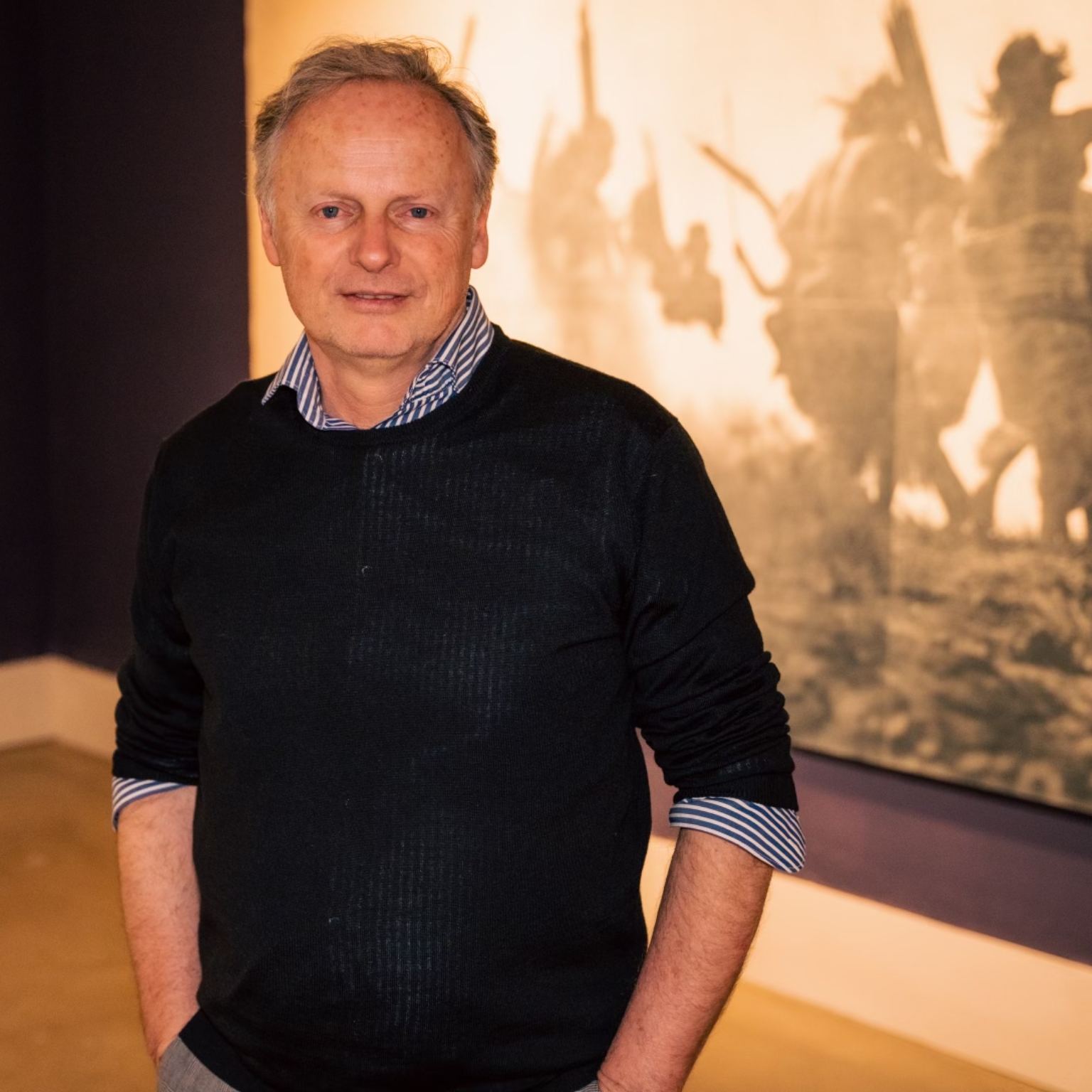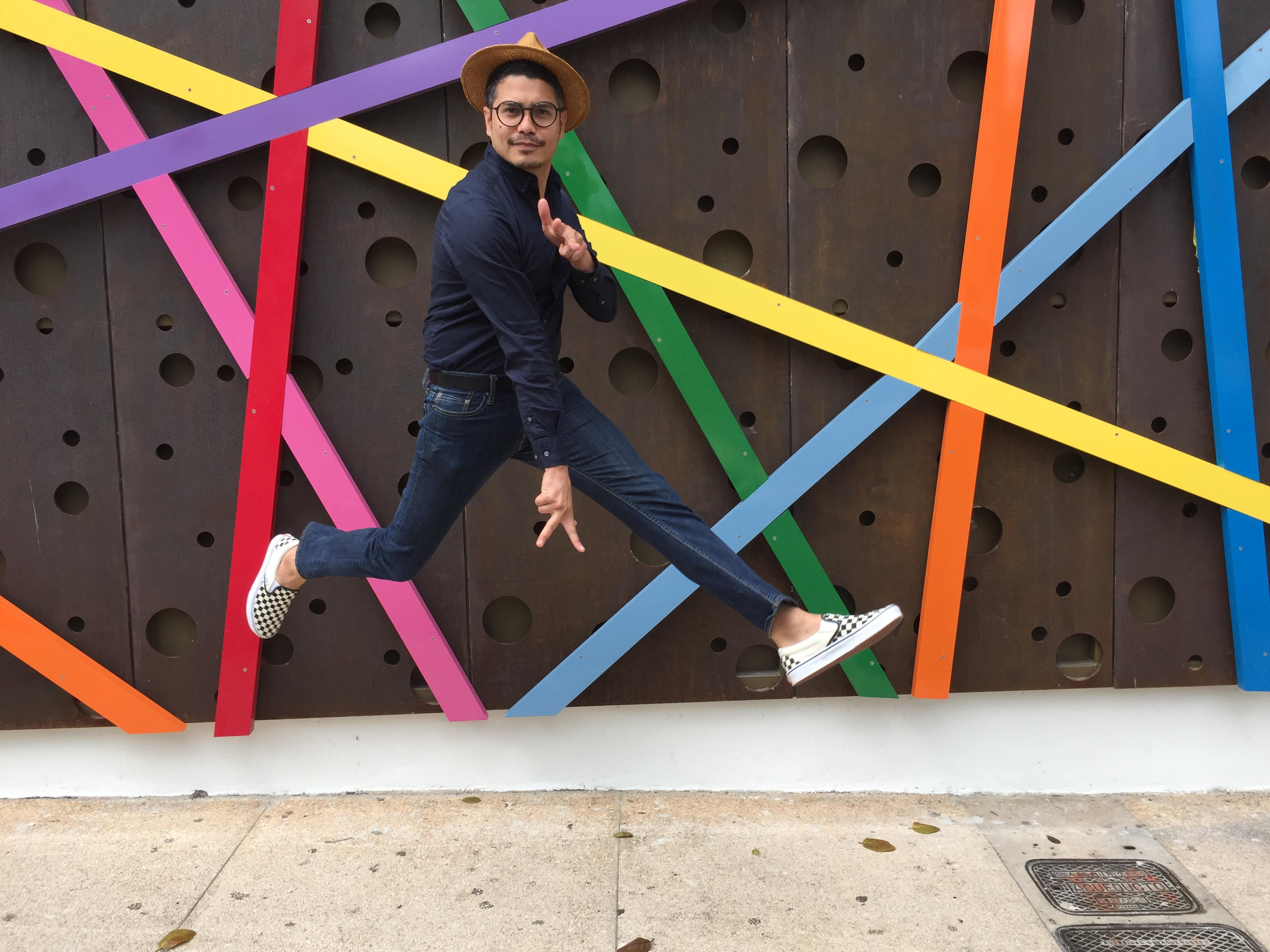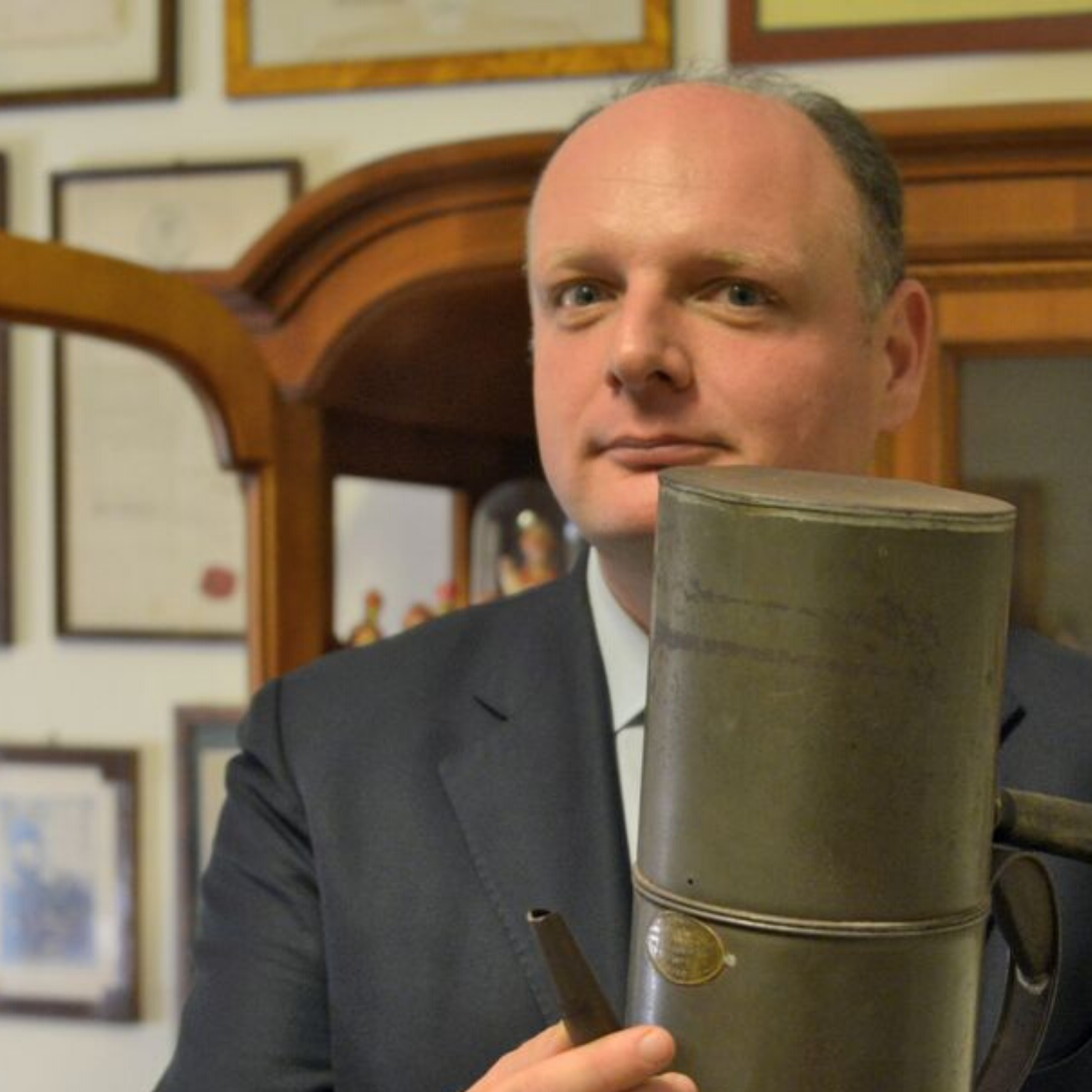João Mourão, director of the Arquipélago – Contemporary Arts Centre, Portugal. Photo © Álvaro Miranda
What is your museum about and what is your work there?
Arquipélago – Centro de Artes Contemporâneas is the contemporary art center of the Portuguese Autonomous Region of the Azores, an archipelago of nine islands located in the middle of the Atlantic Ocean, between Europe and the North American continent.
It was created by the Regional Government in 2015, as a place for the production, presentation, and fruition of contemporary art in all its multiple languages: from visual arts to theatre, from performance to dance, and from architecture to cinema. Focusing on the local community, it aims at being both national and international.
The museum occupies the premises of a former alcohol factory with a total area of more than 10.000 square meters, which was impeccably projected by architects João Mendes Ribeiro and Menos é Mais. It has spaces for artist residencies, a black box for performative arts, music, and cinema, exhibition spaces, and a plethora of multipurpose spaces.

Located on the capital island of a fairly remote archipelago, we are also thinking about a museum that exists outside its physical walls and that can present, produce and mediate contemporary art in the other eight islands.
I became the director of Arquipélago in October 2020, during the pandemic, and since then our main focus has been education and mediation Arquipélago is located in the city of Ribeira Grande, the municipality in Portugal with the youngest people. It is also one of the most economically fragile. These two aspects of the local demography matter tremendously and have been guiding us in how we define and present our program: mediating what an arts center is, decoding contemporary art, and giving our constituents tools for engaging with contemporary culture has been the basis of our institutional work.
Of course, the strategies have been numerous, and we will certainly talk about them throughout our conversation; I would say that our idea for Arquipélago involves creating a relevant institution, in Ribeira Grande, on the island of São Miguel, in the Azores, in mainland Portugal and wherever else we can go.
What inspired you to pursue a career in the museum field and how did you get started in the industry?
Instead of industry, I would rather prefer the term institutions. Reflecting on institutional practice, on what ways of instituting we can imagine and produce, has been central to my practice. I have always believed that an institution should have a voice [and perhaps also a personality], as well as adopt and defend concrete points of view and political positions.
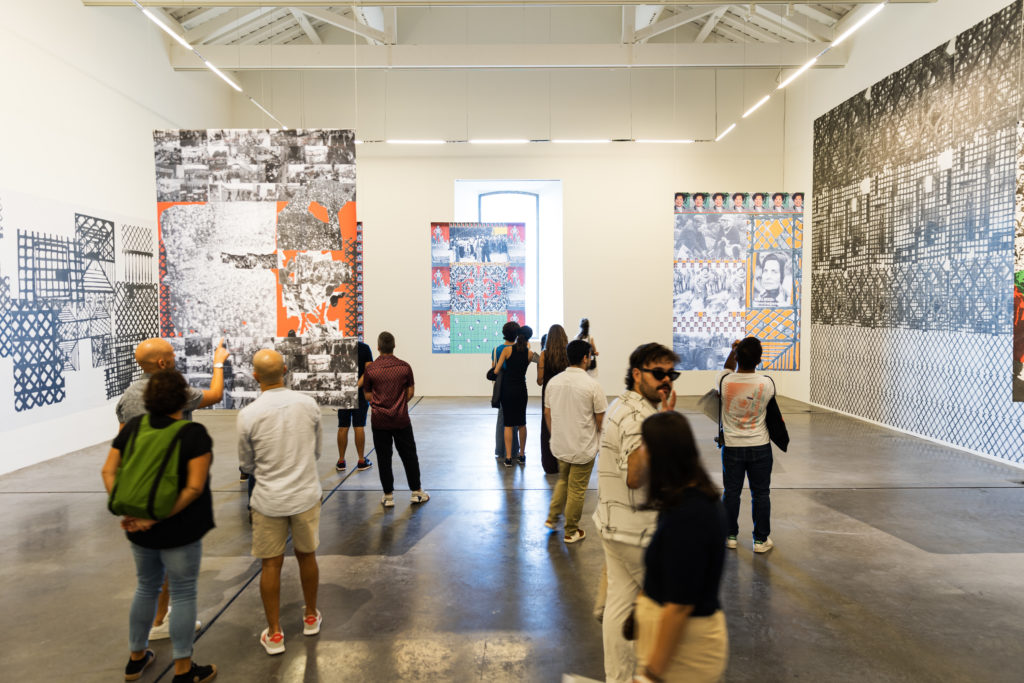
Over the past two years, Arquipélago — Centro de Artes Contemporâneas has become an institution that says things, that reflect the world in which it exists. We have been working to produce a more ethical, responsible, and egalitarian future. The context in which the institution operates models it, shapes it, and suggests very concrete objectives and ways of acting.
Currently, and after so many decades of institutional criticism, new institutionalism, and all the most recent reflections, I believe it is necessary for us to stop, as public institutions, from thinking that we are on a pedestal and that our work has no political consequences beyond of simply showing contemporary art.
How does your museum work to engage and educate diverse audiences, including underrepresented communities?
When I arrived in Arquipélago, relations with our audiences were tense. I quickly realized that such tension existed in several sectors, including the island’s artistic community. This disagreement was the result of a misunderstanding of what the museum is, and this misunderstanding was the result of how the institution positioned itself and related to the community. I believe that the burden of responsibility for understanding institutional activity is always on our side, on the institution, and not on the public. It was from then on that we began to think about an increasingly active role in mediation.
And when I speak of mediation, I am referring to institutional relations, communication with journalists and audiences, the autonomy of the mediation service as a programmer and creator of content, and the creation of projects that give physical and critical space to specific groups for that purpose.
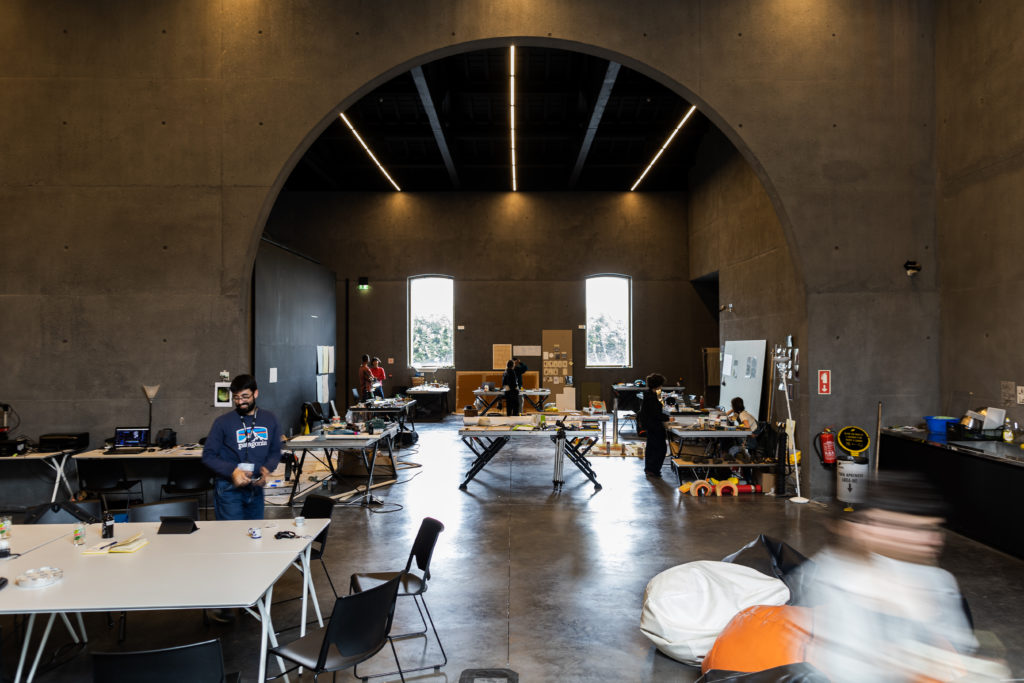
Develop work and integrate the programming of the museum, giving carte blanche to local cultural associations to present programming here, etc. In these mediation processes, we identified gaps in the territory in which we operate, namely in matters of training and non-formal education.
It is from there that several continuity projects are designed, such as training in cinema, in production and cultural communication, or the visual arts course organized in partnership with the Luso-American Foundation for Development, or the summer school that we hold annually with secondary school students from the other Azorean islands, bringing them to Arquipélago and developing decoding skills, as well as sensitivity to contemporary artistic practices.
These have been exercises in imagining the future — but above all in producing it — and this will only happen if we work together and on an ongoing, long-term basis. As a concrete example of where we stand and how we are working towards this idea of political consequences, I can tell you about the work we are doing with the local LGBTQ+ communities. As a cultural institution, we must be that other place of possibility, of otherness. And that’s how we started thinking about programming in an intersectional way. We don’t do it by cycles or fashions; we do it because we believe in change, and this change must also be thought of in the very structure of institutions.
From training the Arquipélago team on gender issues to bringing a queer film festival hub from Lisbon to the Azores, to debates on mental health in the queer community, to programming transgender artists, to the most symbolic acts, such as hoisting the LGBTQ+ flag, we have created this safe space where artists feel welcome, where audiences feel safe and where children and seniors dance with drag queens on a Saturday afternoon.
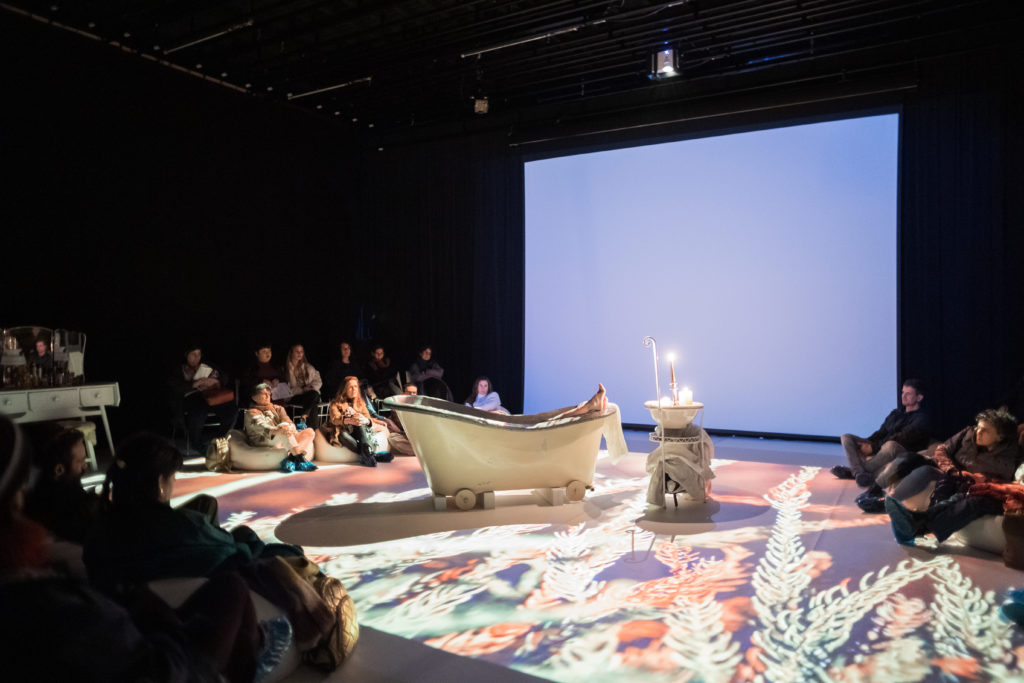
Can you share an experience or project that you are particularly proud of from your time at the museum?
More than just one project I would prefer to address the programmatic axes that have been designed and worked on in a very organic and, above all, responsive way. There are obviously guidelines, but I especially like that the institution is this restless place. The world changes every day, and institutions, even if tied to bureaucratic protocols, have to know how to adapt constantly, or run serious risks of being emptied out and forgotten.
This doesn’t mean that we have to be constantly producing or that we have to speed up; quite the contrary, we have to be attentive, adapt, respond, and be part of the collective. Explaining how our institutional activity is articulated always seems to make it more schematic than it is. The following categories, although operational in a context such as this conversation, for example, lose their limits and interact with each other in a way that is not only quite interesting but also, sometimes, unexpectedly productive.
Thus, recognizing a certain artificiality in what I am going to say next, and without wanting to create any hierarchy of importance, we intend to achieve with the exhibition program a series of quite varied objectives that shape the way we look at the format of the exhibition, be it individual or collective, and how it relates to the local community.
We are interested in empowering and giving visibility to young local artists, and for that, we turned one of the exhibition rooms into a project room, where we present the first institutional exhibitions of young artists born or living in the Azores, carrying out curatorial follow-up and working on their insertion in visibility and recognition circuits.
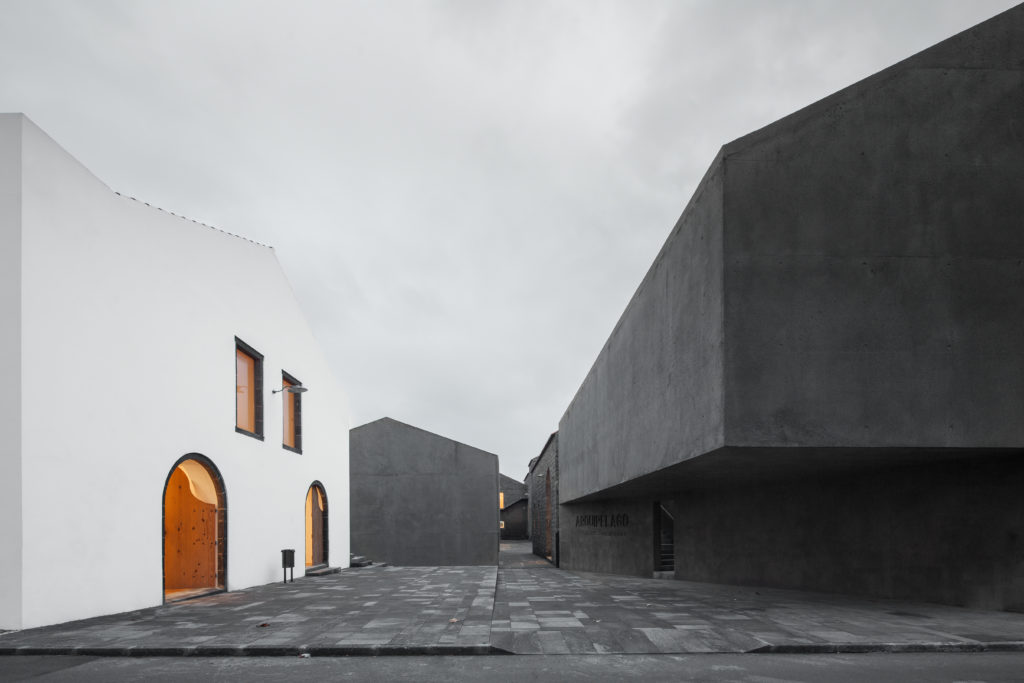
We are also interested, on the other hand, in presenting a program mainly made up of female artists, having already organized individual exhibitions by Ana Hatherly, Maria José Cavaco, Susanne Themlitz, or Carla Filipe, in a continuous attempt to think about this institution through an expanded set of subjectivities from female authors. Finally, we are also interested in reflecting curatorially on the exhibition as a device, expanding the possibilities of what an exhibition is or the way institutions think and present them, risking more hybrid, temporally expanded, and participatory models.
Another line of programmatic reflection involves recognizing the uniqueness of our archipelagic territory. One of the missions of the Archipelago is to bring contemporary artistic practices to the other islands of the Azores, and, in this sense, we have already presented thematic exhibitions from our collection on five of the other islands. In addition to using the collection as a work tool, we also circulate individual exhibitions that we produce.
What do you see as some of the biggest challenges facing museums in the next 5-10 years, and how do you plan to address them?
Imagining and producing the future. That’s a really hard challenge but one that we have to keep building as a collective.
Interview by Fabio Pariante, journalist / Twitter – Instagram
MORE
The Arquipélago – Contemporary Arts Centre: Instagram – Facebook
